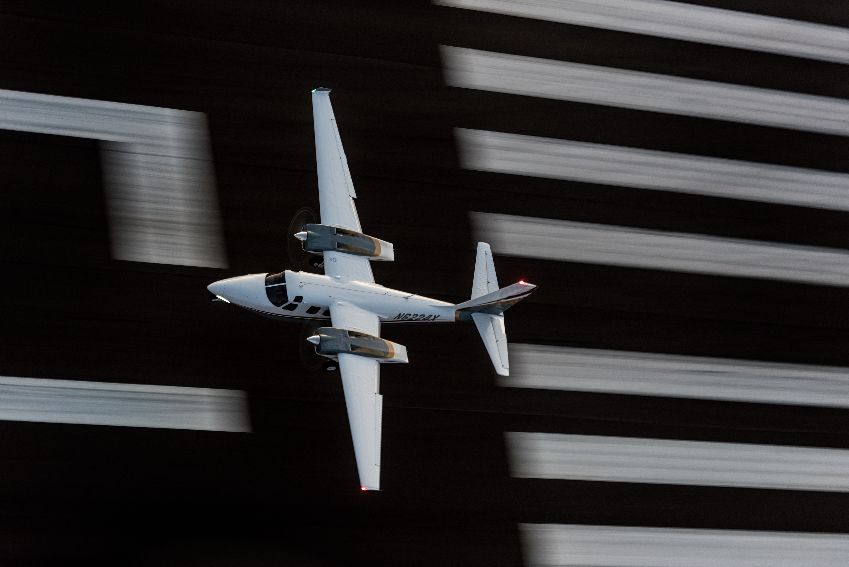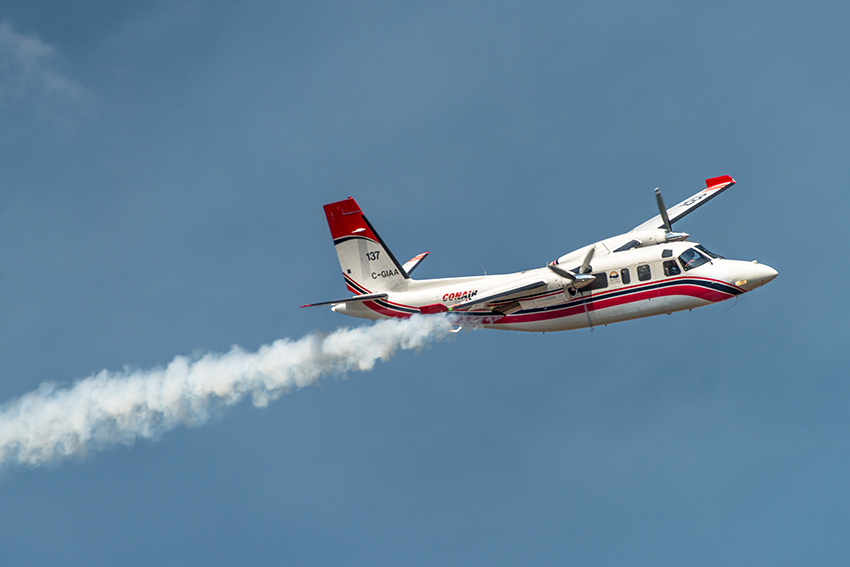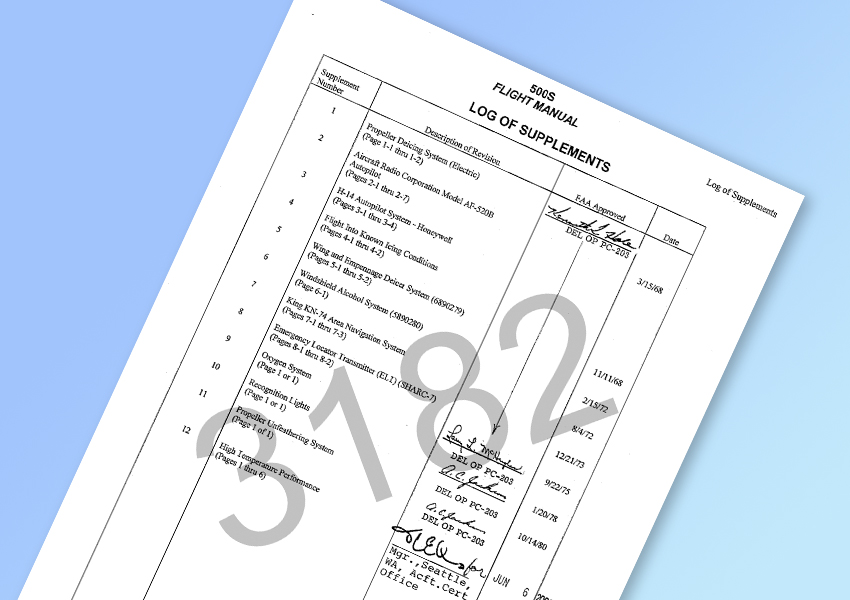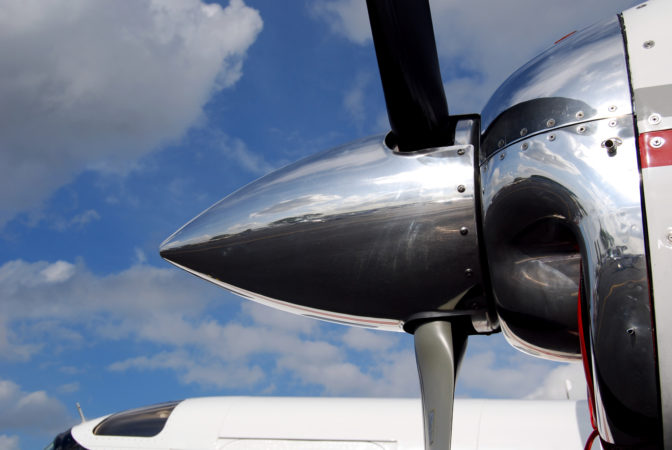A Focus on Hot Weather Operations

Record temperatures in the United States and Europe, and news out of Japan of extreme conditions for Olympic athletes make it clear the northern hemisphere is in the grips of extreme heat events. High temperatures can have big impacts on airplanes, especially as it relates to performance. Here’s how:
Beware of Density Altitude’s Sly Impacts

For many pilots who fly to airports primarily at lower elevations, density altitude is something that was covered in private pilot ground school, and probably not considered since. But the impact of heat, humidity, and elevation can quickly overwhelm an airplane’s ability to takeoff and climb. Consider the 500S. At sea level, gross weight, no wind, the takeoff distance to clear a 50-foot obstacle is only about 1,800 feet. Even a really hot summer day of 35 degrees Celsius (95º F) will only increase that distance to about 2,100 feet. Head to the mountains and things change quickly. That same standard day will take about 3,100 feet to clear the obstacle at an airport sitting at 6,000 feet. Now raise the temperature 20 degrees above standard like you did at sea level and it will take 3,600 feet, a pretty significant difference. More importantly, if an engine fails, perfect technique will get you climbing 80 feet per minute on a standard day and only about 25 feet per minute on a +20 day.
As you would expect, turbines do better, but they aren’t immune to the impacts of density altitude. In a 690A, our same 6,000-foot airport would require a little more than 3,000 feet on a standard day and a bit more than 4,000 feet on a +20 day. Single-engine climb is where the turbines really shine. A standard day at 6,000 feet sees a single-engine climb rate of about 800 feet per minute, whereas on a +20 day, the book says we should still be climbing at 650 feet per minute. Regardless of the performance improvements over a piston, if the airport is high and it’s summer, the performance charts should be the first place you turn.
Firefighting Ramps Up Early

With the higher temperatures of summer comes the threat of wildfires. Conair, a Canadian aerial firefighting company, operates seven Twin Commanders as bird dogs and two more on parts and supply runs. A company representative provided this report:
The fire season this year in Alberta has so far been fairly average, enabling the province to release on loan the Twin Commander bird dog to British Columbia to support operations from Castlegar. Similarly, the Yukon Twin Commander, which was based in Whitehouse, has been deployed to Revelstoke BC to assist with forest fires in the region. And, after the recent heat dome and a drier-than-average June and July, British Columbia is experiencing an extreme fire season, with burning conditions approximately three to four weeks ahead of schedule. Recent weather and fuel conditions have made initial attacks challenging. The Twin Commander bird dogs are flying throughout the province, with the Okanagan, Kootenays, and southern Cariboo regions experiencing a significant number of fires-of-note. There are over 1200 fires this year to date, with over 250 active fires. The rest of the fire season outlook doesn’t look promising and isn’t likely to slow down until the rain – or snow – arrives.
Owners of 500s Can Order Supplements from Twin Commander

Sometimes it’s so hot that even the writers of the flight manual couldn’t have imagined it. When the temperature exceeds the values listed in the performance charts it can turn you into a test pilot, a situation no pilot wants to be in. For pilots who routinely operate out of hot and high environments, or those wanting better performance data, Twin Commander Aircraft offers flight manual supplements. Owners of 500S models can ask for supplement 12, 500U owners need supplement J, and owners of 500B models can ask for supplement K. Inside you’ll find performance figures beyond what’s in the standard flight manual, including those for takeoff, climb on one engine and two, landing, and more. Call Twin Commander Aircraft at 919-956-4300 and ask for engineering librarian Pam Moore to get yours.
Heat Can Wreak Havoc on Systems

Density altitude isn’t the only consideration for operating in hot weather. Our airplanes also behave differently in the heat. According to Andre Pridgen, service center manager for Twin Commander Factory Authorized Service Center Aero Air, brakes and prop hubs are a consideration as well. He said brake caliper o-rings tend to fail and leak more when it’s hot, so keep an eye out for the telltale seepage around the landing gear. Aero Air keeps a spare caliper overhauled on the shelf ready to go for this reason. And pilots who tend to ride their brakes or use them more forcefully on landing can expect shorter cycles between maintenance.
Pridgen also stressed that the Hartzell propeller hubs with Aeroshell 6 or 7 grease tend to leak when the temperature starts to rise. Aero Air will see it first in the hangar, and especially on the ramp. And when the grease is new and the prop recently serviced, expect it to happen even more. “I get four or five calls a month from pilots asking about it,” he said. Seeing fluid on the ground near the propellers is always a bit disconcerting, but in most cases Pridgen said it’s harmless.
Most importantly he said it’s critical to watch your starting temperatures. Things happen faster when it’s warmer, and it’s much easier to exceed temperature limits. By keeping a close eye on the engine temperature during start you can prolong your engine’s life and avoid a dreaded hot start.

